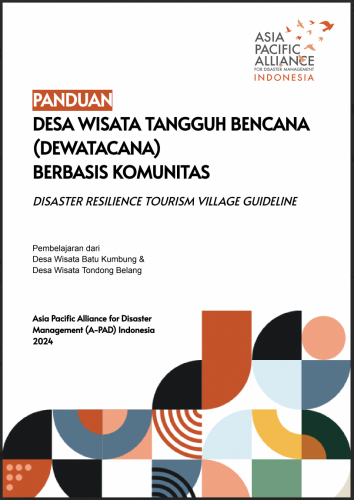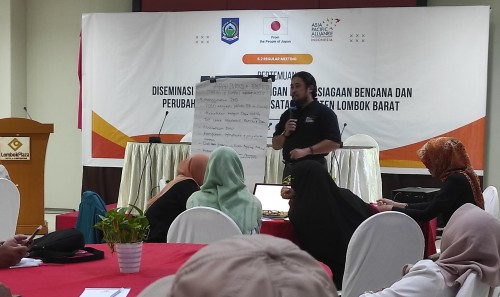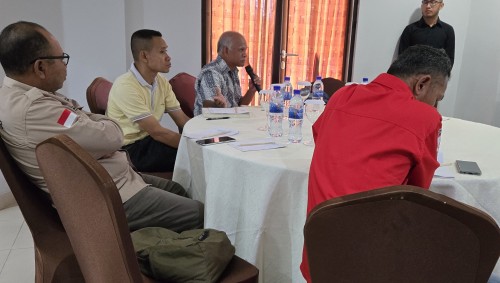【A-PAD Indonesia】 Aiming to Create Disaster-Resistant Tourism Villages
2025.03.16
Indonesia is rich with abundant nature and is dotted with some of the world’s most famous tourist destinations. However, it is also prone to natural disasters such as earthquakes and tsunamis, and the country is making a national effort to create disaster-resistant tourist villages.
The “Disaster Resilient Tourism Village” is a combination of the community-based disaster risk management initiative, Disaster Resilient Village, promoted by the National Disaster Management Agency (BNPB) and the “Tourism Village” tourism promotion initiative by the Ministry of Tourism and Creative Economy. The concept was proposed and realized by A-PAD Indonesia. The first edition of the guidelines was drafted last year, and efforts are continuing to promote the guidelines to strengthen disaster resilience in the region.
In February 2025, as part of the Ministry of Foreign Affairs’ FY2024 Grant Assistance for Japanese NGO Projects, the Building Disaster Resilience in Tourism Village Communities by Promoting Multi-Sector Collaboration was launched. The aim of the project is for disaster-resilient tourism villages to become a model project that will lead to strengthening disaster preparedness systems in the local tourism industry.
Prior to the start of the project, kick-off meetings were held from March 6 to 13, bringing together local governments and stakeholders from each of the three target provinces – West Nusa Tenggara, East Nusa Tenggara, and Bali – to share the project’s objectives and upcoming activities.
In Mataram City, West Nusa Tenggara Province (March 6)
In Labuan Bajo District, East Nusa Tenggara Province (March 8)
Participants included about 30 people from each region, including regional disaster prevention bureaus, tourism bureaus, hotel and restaurant associations, and many more. They listened to the priority issues set by each tourist village and the needs of those involved in the tourism industry, and exchanged feedback to ensure that the initiative would be sustainable.







